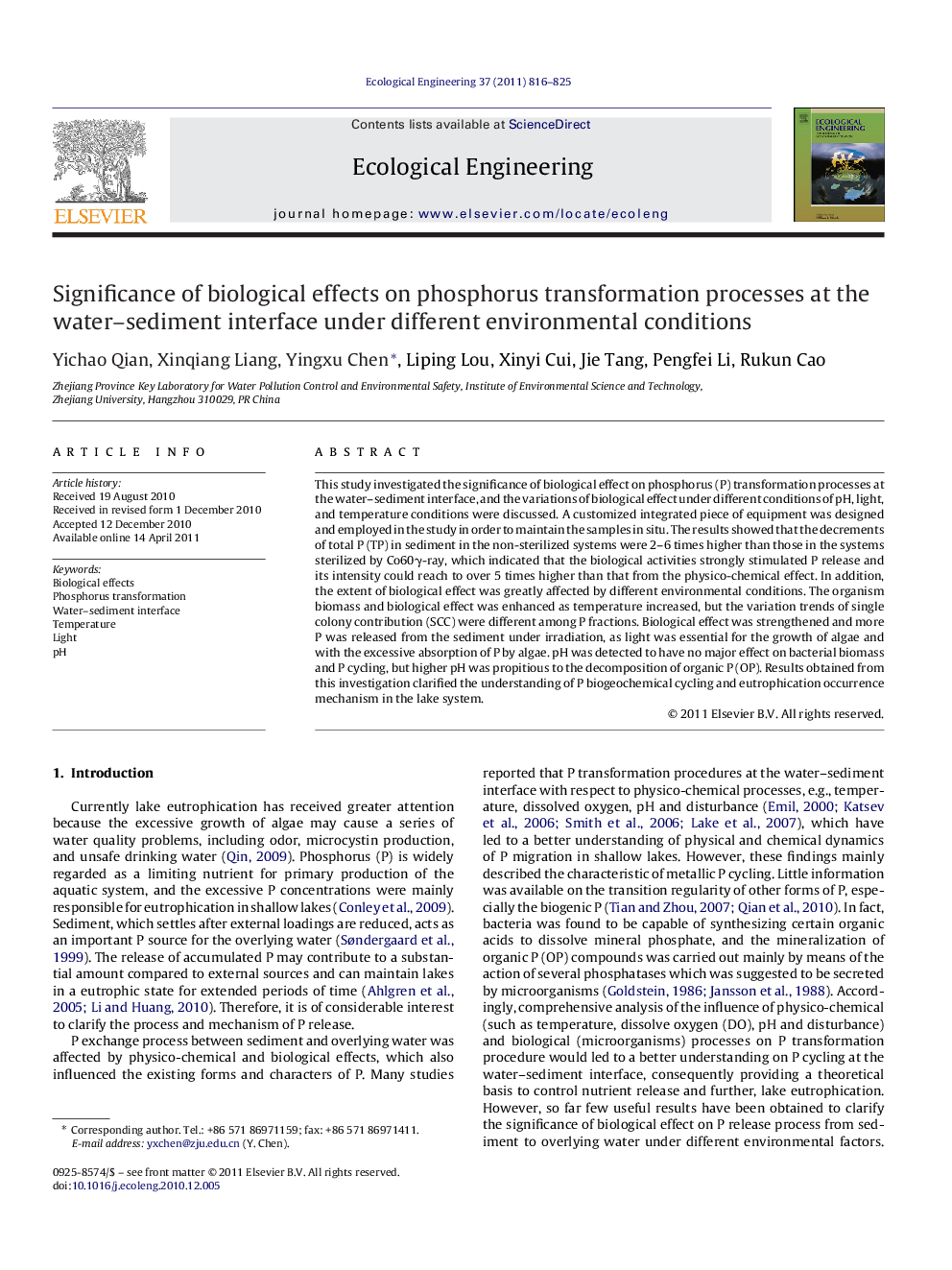| Article ID | Journal | Published Year | Pages | File Type |
|---|---|---|---|---|
| 4390311 | Ecological Engineering | 2011 | 10 Pages |
This study investigated the significance of biological effect on phosphorus (P) transformation processes at the water–sediment interface, and the variations of biological effect under different conditions of pH, light, and temperature conditions were discussed. A customized integrated piece of equipment was designed and employed in the study in order to maintain the samples in situ. The results showed that the decrements of total P (TP) in sediment in the non-sterilized systems were 2–6 times higher than those in the systems sterilized by Co60γ-ray, which indicated that the biological activities strongly stimulated P release and its intensity could reach to over 5 times higher than that from the physico-chemical effect. In addition, the extent of biological effect was greatly affected by different environmental conditions. The organism biomass and biological effect was enhanced as temperature increased, but the variation trends of single colony contribution (SCC) were different among P fractions. Biological effect was strengthened and more P was released from the sediment under irradiation, as light was essential for the growth of algae and with the excessive absorption of P by algae. pH was detected to have no major effect on bacterial biomass and P cycling, but higher pH was propitious to the decomposition of organic P (OP). Results obtained from this investigation clarified the understanding of P biogeochemical cycling and eutrophication occurrence mechanism in the lake system.
